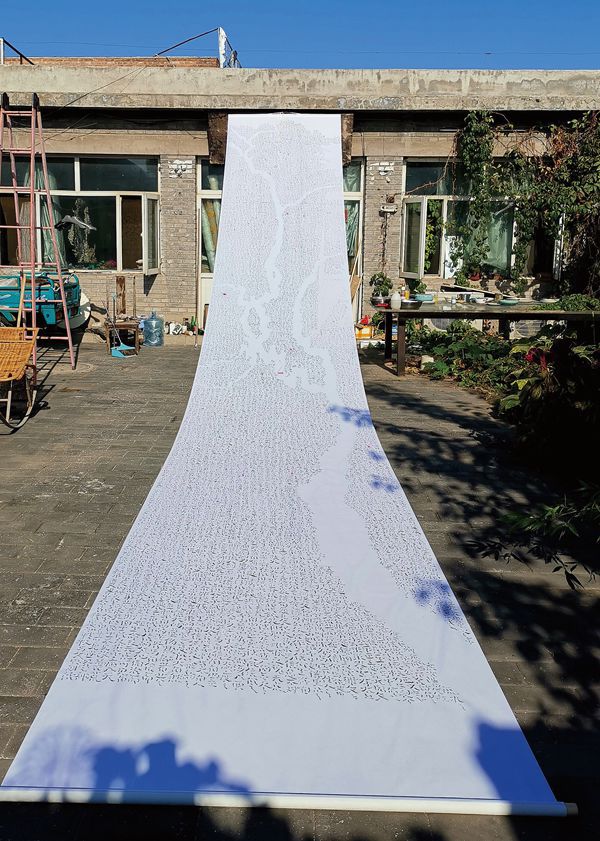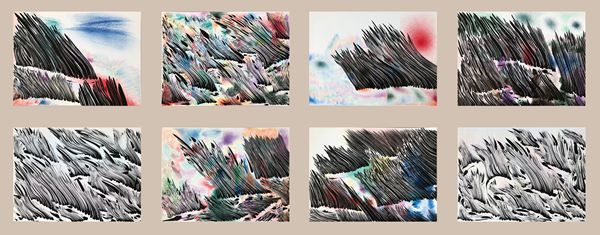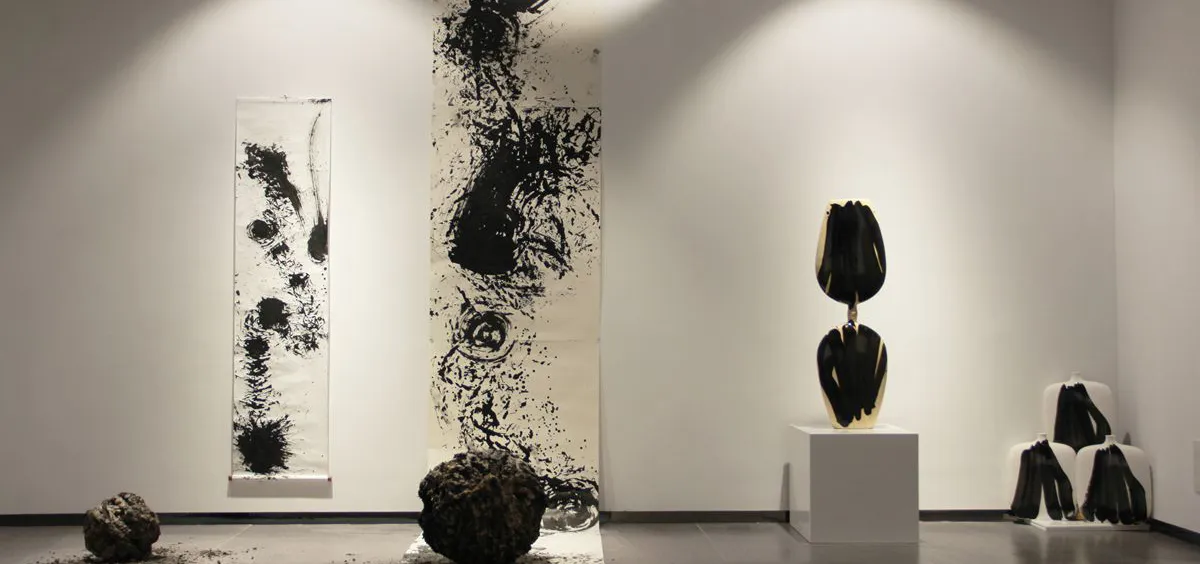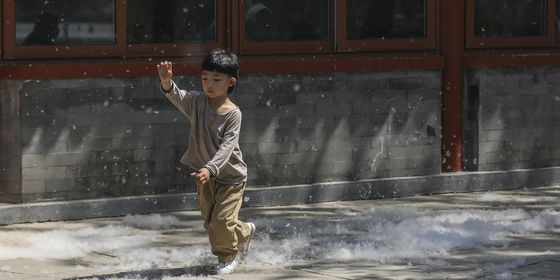A biannual exhibition tries to bring an ancient medium into contemporary art
At first glance, the Wuhan Art Museum’s Second Biannual Wuhan Ink Art Exhibition seems a sweeping wash of black and gray, but monochromatic appearances can be deceiving. Under the theme “Ink and Things,” works in the exhibition introduce a medium traditionally associated with classical Chinese landscape paintings into different artistic forms, from videos to installations to graffiti-like 3D ink portraits on cardboard boxes. TWOC invites exhibition curator Wang Chunchen to talk about the present and future of ink art.

Song Junsheng, “‘Yangtze River’ Plan No.1,” 2019
What was the inspiration behind this exhibition?
Its title was inspired by Michel Foucault’s book Les Motes et les Choses [Editor’s note: literally, “Words and Things”], which discusses the genealogy of knowledge in the human sciences. I borrowed this concept to discuss the genealogy of Chinese ink art. Ink art embodies many traditional aesthetic principles, and has developed special theories which remain hugely influential even today. But in fact, there are contradictions between theory and practice today…so we must find a contemporary theory for ink art. It’s like bringing ink art back to ink itself—its origin, development, and current status.

Xie Tianzhuo, “People on the Bank,” 2018
How is “ink art” defined today?
Today, we use the word “art” instead of “painting.” It combines installments, decoration, video, and even behavior and interaction. Thus, as a medium, ink gains openness, and can dig out more expression from within. Today, ink as a material has already gained more value. It is no longer just the trace left by a writing brush, but a medium to show the relationship between people and the world.

Liu Yi, “Yi Ink,” 2019
How is ink being used in forms other than painting?
I’d like to take artist Tang Chenghua as an example. He burned wood, then carved the scorched parts with knives. The traces are very impactful, and resemble a traditional ink-painting skill called “斧劈皴 (chop and crack)” [Editor’s note: a Tang-era painting technique in which the lines are drawn like carvings from a blade]. This work belongs in the category of installation art, but has a close connection with ink painting. We also have Guo Zhen, who put neon lamps and tubes in front of her painting…and paved the ground with small stones, thus giving the work dimensional space. These are all modern extensions of traditional ink art, moving from the two-dimensional to the three-dimensional plane, into installation, and into the materials themselves.
Cover image: Harada Suzuki, “Cosmos, Earth, Men,” 2015
Gallery: 100 Shades of Ink is a story from our issue, “Grape Expectations.” To read the entire issue, become a subscriber and receive the full magazine.












